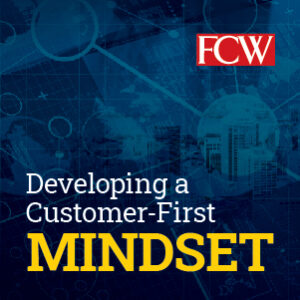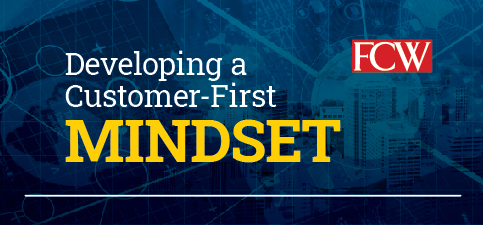Agencies at the Federal, state and local levels have been engaged in efforts to make their activities more customer-focused for years. Progress has been rapid for some, but others have been slow to allocate resources to the work involved in understanding the customer experience (CX) and invest in the technology and processes to improve it. However, the coronavirus pandemic and resulting economic downturn have been a wake-up call to agencies that they can no longer afford to delay their CX initiatives, particularly the move to digital services. The agencies that pivoted most quickly to support teleworkers and expand digital services for citizens were those that were already heavily committed to IT modernization. For example, state agencies across the country turned to chatbots to help them answer questions about unemployment benefits and pandemic-related assistance. By investing in IT modernization and digital services, agencies can build trust in government services and sharpen their customer-first focus. Read the latest insights from industry thought leaders in customer experience in Carahsoft’s Innovation in Government® report.
Fostering Employee Development in Times of Change
“Agency leaders will also need to adapt to this changing work environment by embracing new ways of thinking. They should begin by recognizing that the workplace will continue to evolve and that technology will continue to play a part in the way we work. By investing in technology, creating pathways for employees to learn new skills and highlighting career growth opportunities, government can broaden its mission impact and appeal to the best and brightest job candidates. And it can boost its efforts to engage younger workers, who have demonstrated an interest in values-driven, purpose-based work and the sort of sustainable careers that government can offer.”
Read more insights from Salesforce’s Chief Marketing Officer, Sarah Franklin.
Connected Technology Equals Better Service
“As consumers, we use technology in virtually every aspect of our lives, and when we use government services, we expect the same user-friendly platform and connected experience. Those customer expectations are driving agencies to transform the way they deliver services digitally. Whether agencies are rolling out a mass vaccination program or setting up contact centers, it’s important they drive change with the constituent experience in mind and align their mission with cultural, political and social change. The benefits of digital transformation go beyond the citizen experience and also impact agency employees. By investing in a unified cloud-based platform model, agencies can simplify complex processes and empower employees to complete their jobs using one platform.”
Read more insights from Salesforce’s Regional Vice President of Strategy, Kristen Sanders, and Vice President of Solution Engineering, Jennifer Ward.
Reimagining Public Health Services
 “During the response to COVID-19, we overcame many of the technical limitations that used to slow down innovation. One case in point: Vaccines have typically taken four to seven years to come to market, but researchers and manufacturers have developed effective coronavirus vaccines within 10 months of the start of the pandemic. Health and human services agencies should engage with other government agencies and the American Public Human Services Association, the American Public Health Association and the Association of State and Territorial Health Officials to explore possible opportunities. The greatest failure we face is a failure of imagination. It’s time to think beyond where we are today and reach for what’s possible.”
“During the response to COVID-19, we overcame many of the technical limitations that used to slow down innovation. One case in point: Vaccines have typically taken four to seven years to come to market, but researchers and manufacturers have developed effective coronavirus vaccines within 10 months of the start of the pandemic. Health and human services agencies should engage with other government agencies and the American Public Human Services Association, the American Public Health Association and the Association of State and Territorial Health Officials to explore possible opportunities. The greatest failure we face is a failure of imagination. It’s time to think beyond where we are today and reach for what’s possible.”
Read more insights from Salesforce’s Industry Executive for Health and Human Services in the Global Public Sector, Rod Bremby.
A Digital-First Approach to CX
“Ideally, agencies and citizens have a streamlined, productive conversation online. It starts with considering the art of the possible and asking how an agency can achieve the same ease of use and digital-first approach that people experience with private-sector organizations. Agencies should ask themselves what problem they’re trying to solve and then put themselves in their beneficiary’s shoes. It’s also helpful to ask frontline employees, who are speaking to citizens every day, what changes would make it easier for them to achieve their tasks faster and more efficiently. That might involve breaking down barriers between offices or agencies so that citizens and employees can have a seamless experience, or leveraging chatbots for simple, high-volume requests online.”
Read more insights from Salesforce’s Global Customer Growth and Innovation Evangelist, Tiffani Bova.
New Cloud Security Considerations for Government
“Zero trust is not a single product or service. Previously, organizations deployed a perimeter-based approach to security, treating the organization’s network as a trusted zone and placing security defenses at the edges. A zero trust approach never assumes that an organization is safe and sound within its own “secure” corporate network; rather, it places control around the data assets themselves. The purpose is to create a framework in which a person seeking information is authenticated every step of the way, data is isolated and protected, and administrators have the ability to audit who’s been where and done what. The principles are similar to the process you would go through to board a plane. Someone validates your identity when you get your ticket, check your bags, pass through the security checkpoint and right before you are allowed to walk onto the plane.”
Read more insights from Salesforce’s Vice President of Public Sector Security, Mike Rosa, and Vice President and Associate General Counsel, Alicia Rosenbaum.
Transforming Talent Management at DOD
“The Defense Department faces a number of challenges when it comes to managing the careers of active-duty service members and civilian employees. For one thing, the young people coming out of high school and college are digital-natives. They understand how technology should work and have high expectations for the capabilities they want at their fingertips. They also have high expectations for career growth. To meet their needs, managers must show a clear path for training and opportunities so employees and service members can continue to develop, while also providing them a platform to monitor their personnel records and track career progression. Unfortunately, the DOD systems that support talent recruitment, development and evaluation processes evolved in their own silos. However, with technological evolvement, we now have the ability to integrate all that information and transform the experience for employees and their managers by providing a unified platform.”
Read more insights from Salesforce’s Vice President, Greg Brundidge.
Collaborative AI for Knowledge Discovery
“Letting user actions retrain a machine learning model is not new. For example, recommender engines have been telling us what else to put in our online shopping carts for 20 years. That ‘wisdom of the crowds’ relies on many people repeating a task for nearly the same objective. Crowd-based approaches often don’t work for government users who are doing high-value, knowledge-based tasks. For example, a key document might not have been opened by a single person — let alone a ‘crowd’ — in years. Furthermore, the government is often the only entity that can perform particular activities, such as approving licensing and permitting applications and conducting law enforcement. Therefore, government activities often require deep research and digging through huge amounts of unstructured data, which consumes vast amounts of personnel resources and time.”
Read more insights from Salesforce’s Vice President of Collaborate AI for Industries, John R. Frank.
Download the full Innovation in Government® report for more insights from these government customer experience thought leaders and additional industry research from FCW.







